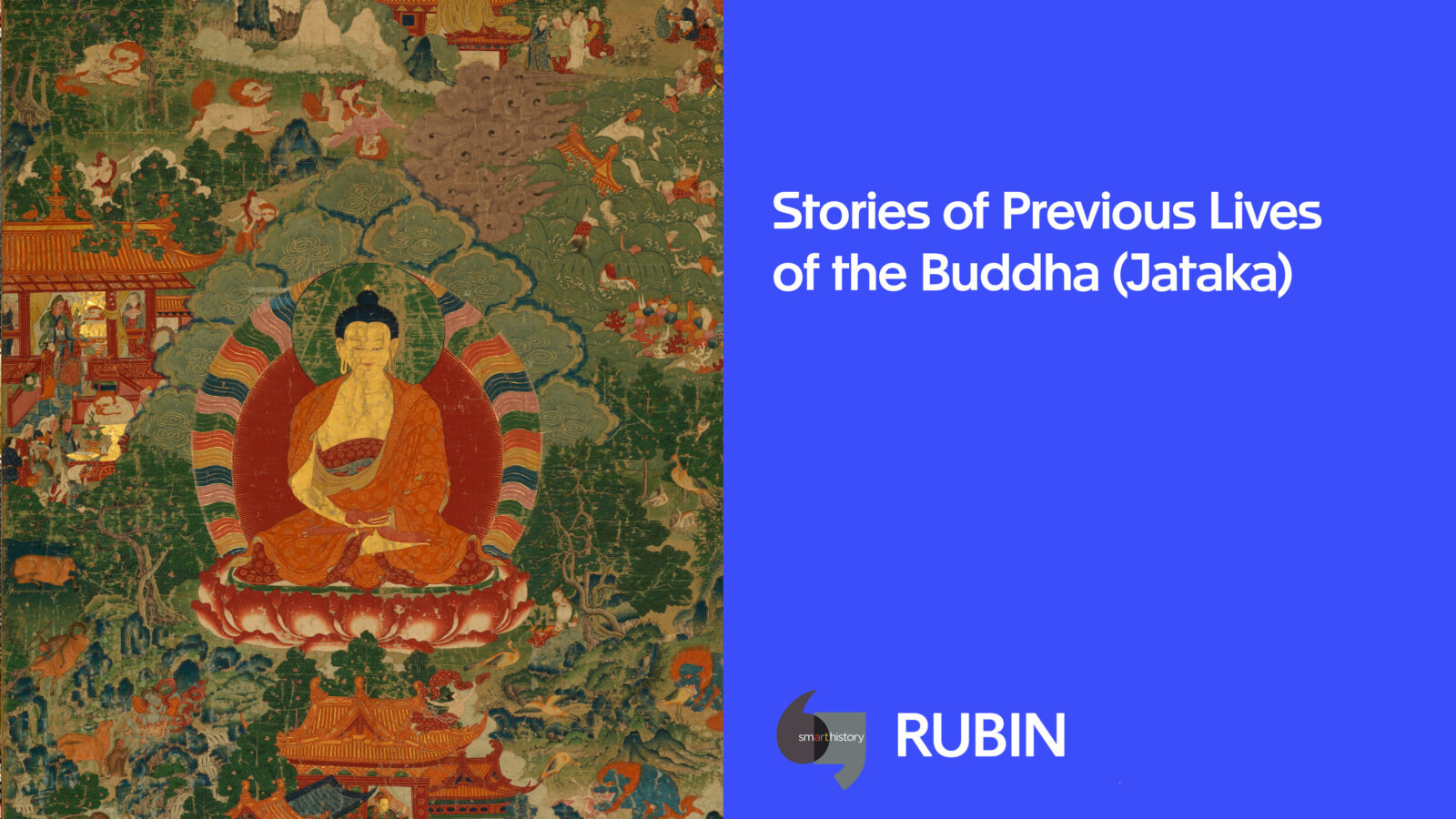Eastern Tibet
Late 17th-18th century
Eastern Tibet
Late 17th-18th century
Tales of Buddha Shakyamuni’s past lives (jataka) are some of the most well-known narratives in Himalayan culture and are often presented in a series of paintings, with each painting depicting a part of the collection of stories. Presented as small vignettes, these narrative scenes are usually arranged around a central image of the Buddha and visually separated by landscape elements. The traditional set of 34 tales, which was later expanded to 108, includes the stories of the Buddha’s previous lives as a bodhisattva, king, merchant, and animal. For example, the scenes in the upper-right corner of this painting depict the story of when the Buddha, in his life as an elephant, saved a group of starving wanderers in the forest by sacrificing his body, hurling himself over a ledge for their sustenance.

Teachings and precepts that offer practical and experiential guidance. In Buddhism instruction is primarily an oral tradition and is often targeted to the specific needs or disposition of a student or disciple.
A vehicle for the preservation and transmission of knowledge. The Buddha’s teachings were originally passed down through oral transmission and storytelling, and stories of the Buddha’s past lives are considered an important source of inspiration and guidance.
A state of “waking up” from illusion and seeing the true nature of reality. Buddha Shakyamuni attained awakening while meditating under the bodhi tree. Buddhist teaching explains that the accumulation of merit and wisdom are essential for achieving awakening, also known as enlightenment.
An awakened being who understands the true nature of reality and is free from the cycle of birth, death, and rebirth. While there are many buddhas, Siddhartha Gautama is the historical Buddha, whose teachings became the foundation of Buddhism.
Today, Tibetans primarily inhabit the Tibetan Plateau, situated between the Himalayan mountain range and the Indian subcontinent to the west, Chinese cultural regions to the east, and Mongolian cultural regions to the northeast. During the 7th to 9th century, Tibetan rulers expanded their empire across Central Asia, and established Buddhism as the state religion.
Get the latest news and stories from the Rubin, plus occasional information on how to support our work.